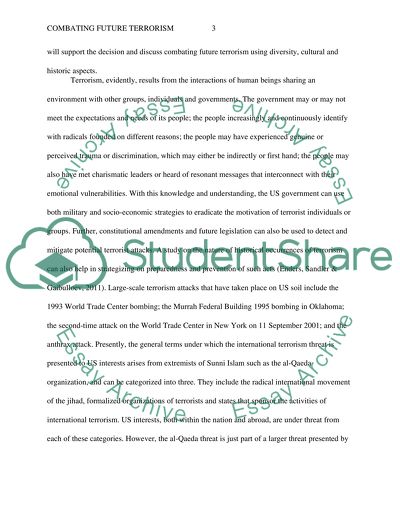Cite this document
(“Combating Future Terrorism Essay Example | Topics and Well Written Essays - 2500 words”, n.d.)
Retrieved from https://studentshare.org/miscellaneous/1626305-combating-future-terrorism
Retrieved from https://studentshare.org/miscellaneous/1626305-combating-future-terrorism
(Combating Future Terrorism Essay Example | Topics and Well Written Essays - 2500 Words)
https://studentshare.org/miscellaneous/1626305-combating-future-terrorism.
https://studentshare.org/miscellaneous/1626305-combating-future-terrorism.
“Combating Future Terrorism Essay Example | Topics and Well Written Essays - 2500 Words”, n.d. https://studentshare.org/miscellaneous/1626305-combating-future-terrorism.


